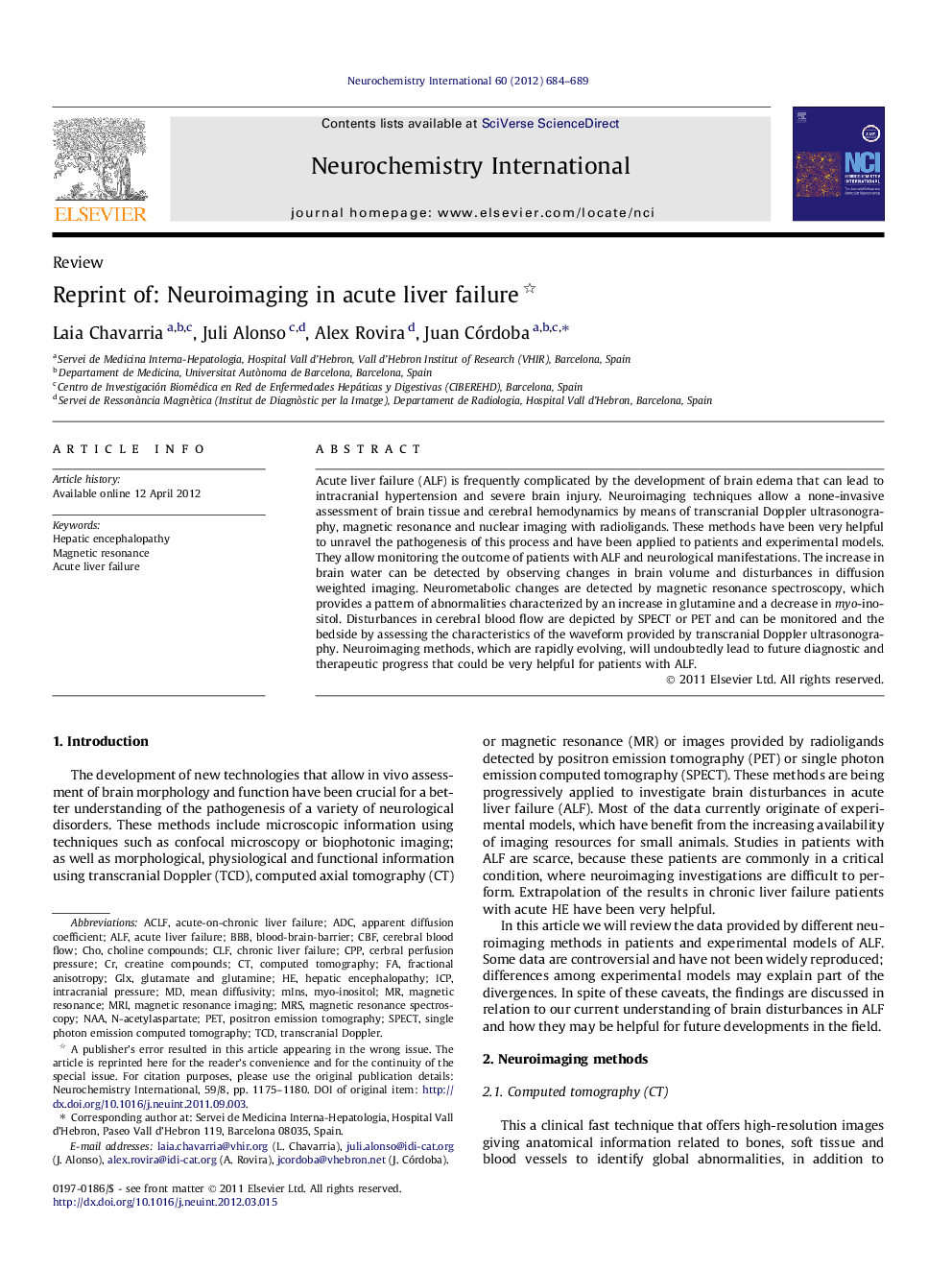| Article ID | Journal | Published Year | Pages | File Type |
|---|---|---|---|---|
| 2200904 | Neurochemistry International | 2012 | 6 Pages |
Acute liver failure (ALF) is frequently complicated by the development of brain edema that can lead to intracranial hypertension and severe brain injury. Neuroimaging techniques allow a none-invasive assessment of brain tissue and cerebral hemodynamics by means of transcranial Doppler ultrasonography, magnetic resonance and nuclear imaging with radioligands. These methods have been very helpful to unravel the pathogenesis of this process and have been applied to patients and experimental models. They allow monitoring the outcome of patients with ALF and neurological manifestations. The increase in brain water can be detected by observing changes in brain volume and disturbances in diffusion weighted imaging. Neurometabolic changes are detected by magnetic resonance spectroscopy, which provides a pattern of abnormalities characterized by an increase in glutamine and a decrease in myo-inositol. Disturbances in cerebral blood flow are depicted by SPECT or PET and can be monitored and the bedside by assessing the characteristics of the waveform provided by transcranial Doppler ultrasonography. Neuroimaging methods, which are rapidly evolving, will undoubtedly lead to future diagnostic and therapeutic progress that could be very helpful for patients with ALF.
► This review shows neuroimaging studies of patients with acute liver failure (ALF). ► Neuroimaging includes non-invasive techniques able to monitoring ALF complications. ► The evolution of these technologies helps to understand brain pathologies of ALF. ► These methods provide new ways of diagnosing and follow-up of new treatment effects.
